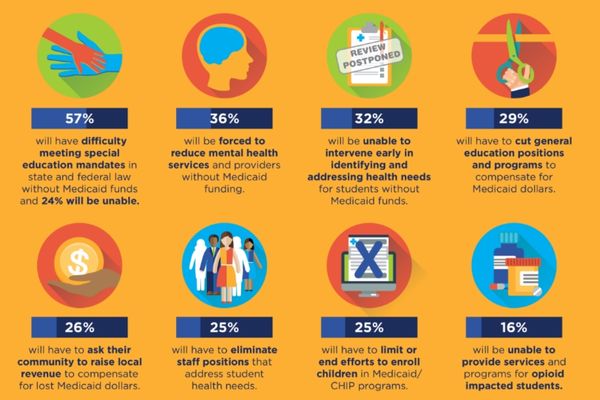Medicaid 101 for School Superintendents
Type:
Report
Topics:
Advocacy & Policy,
Health & Wellness
March 01, 2019

Medicaid is health insurance for one in five people in the United States, including 40 percent of children— approximately 37 million children. Medicaid’s sister program, the Children’s Health Insurance Program (CHIP), covers an additional 8.9 million children. For the low-income families whose kids are covered by Medicaid, coverage is affordable because Medicaid keeps out-of-pocket spending low.
For more than 30 years, Medicaid has paid for eligible school health services included in student’s Individualized Education Programs (IEP) or Individualized Family Service Plan (IFSP).
Seventy nine percent of low-income, school aged children receive health coverage through Medicaid and CHIP which is 37% of all school-aged children.
Today, new opportunities exist to enhance the role that Medicaid plays in school, creating a sustainable source of revenue to support school-based health and behavioral health services .
This brief explores what Medicaid is, what it covers—in and out of school—and how school districts can leverage Medicaid to enhance school health services.
Advertisement
Advertisement
Advertisement
Advertisement

-(16).png?sfvrsn=44688378_7)
